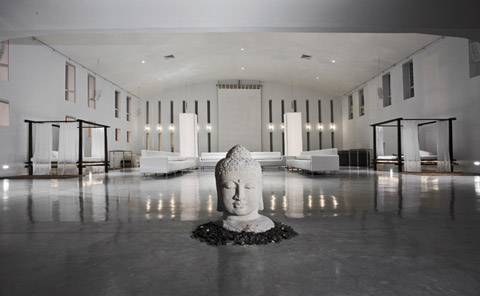Real estate appraiser and consultant Jonathan Miller dissects the residential property market, looking at the value relationships that define New York luxury real estate.
By Jonathan Miller, President/CEO
Miller Samuel Inc.
A New York Real Estate Appraisal & Consulting Company
In Manhattan, for example, we generally see the value of terrace square footage running one quarter to one half the value of interior square footage on a per square foot basis.
Penthouse Living Provides A Clear View
Everyone knows what a penthouse really is, right? Well, perhaps the definition can be a blur to many unless they actually own one. Consistent with the theme of this edition of Haute Living New York, penthouse units can be a work of art…unique creations that rise above all others.
Penthouse units often fall within the luxury category, which is defined in the series of market studies Miller Samuel prepares for Prudential Douglas Elliman as the top 10% of the market by price. However, price does not exclusively define the penthouse unit. Penthouses comprise less than 1% of the overall housing stock making them unique in the market, but more significantly, unique within the building in which they are located.
Buyers of penthouse properties represent a distinct and unique market segment. Potential buyers tend to focus on penthouse units as a purchase option from the beginning. They are more interested in the concept and amenities associated with them, over the emphasis on purchasing a unit because it happens to be located within a particular building. In other words, the buyer’s association is more strongly tied with the unit, first and the building, second. This is not to say the amenity palette of a particular building is not a significant consideration. It simply means that the actual unit is what draws these buyers to the building in the first place.
In today’s market, a penthouse can loosely be defined as a residence that has nearly all these characteristics:
- Located at the top of a residential rental, co-op or condo high-rise building.
- Nearly always includes some form of outdoor space.
- Has a layout that is different from others within the same building.
- Has a collection of amenities that may not be found in other non-penthouse units below such as inclusion of a fireplace, floor to ceiling windows or doors off the terrace, higher ceiling heights or multi-level configurations.
Developers understand the uniqueness of these units and often hold back their penthouse inventory from the market until the sales momentum in the building is progressing to their satisfaction. In many cases, the release of the penthouse units represents the final step of the marketing effort. Developers can maximize the premium value often associated with a penthouse by creating a sense of exclusivity by introducing them to the market as one of the last units to remain available. In other words, saving the best for last can serve the developer well. However, we have seen a number of Manhattan penthouse units, more often in downtown loft neighborhoods, sell in the early stages of the marketing effort, so its not a hard and fast rule for a developer to save the penthouse units to the end of the marketing effort.
A penthouse unit in a building that is configured with very small generic units might be worth less than the same penthouse unit on top of a building with a mix of very large luxury units. Penthouses can be configured with any size or layout, but to command a premium, they need to be unique to the market and building.
With space at such a premium, private outdoor space or terrace areas are considered one of the most, if not the most defining amenity associated with a penthouse unit and penthouse living. Terrace areas are often landscaped, may have garden areas, small trees, automated irrigation, wood decking, Jacuzzis or lap pools, cooking grills or other facilities that allow more flexibility for entertaining guests or simply enjoying the outdoors with family.
Many luxury buildings constructed these days have a ¬wedding cake top which means that there are a series of setbacks that allow for several floors of penthouse units with significant terrace areas.
The premium associated with penthouses is often calculated by analyzing competing units on a price per square foot basis. In other words, the price per square foot comparison between a penthouse unit and a non-penthouse unit is believed to be reflective of their premium in value. However, this comparison basis is misleading since price per square foot is based on the interior square footage of a unit. The price per square foot of a unit with a terrace could be significantly skewed upward when compared to a unit that does not have outdoor space.
One way to equalize the haves and have-nots is to apply an appraisal technique I have developed as a calculation to convert exterior space to interior space. In Manhattan, for example, we generally see the value of terrace square footage running one quarter to one half the value of interior square footage on a per square foot basis. For example, if one third is selected as a generic indicator, a 900 square foot terrace would be equivalent to 300 square feet of adjusted interior space. This adjusted square footage gets added to the existing interior square footage and voila, an adjusted price per square footage is created and the penthouse unit can be compared to a unit without outdoor space. However, this formula does not take into account the other amenity differences so a residual premium usually remains. However, this analysis till helps level the playing field for a more reasonable basis of comparison.
Views are one of the amenities most commonly associated with penthouse living. Since these properties generally sit on top of a high-rise building, they tend to have more open and expansive views than the lower floor units or at the very minimum, receive superior natural light. The view amenity can vary greatly between buildings depending on how far they are set back from adjacent buildings, proximity to water or open land views, cityscapes, landmarks and a host of other types of scenery. The view amenity is usually relational to the other units in the building. Penthouse units, because of the upper floor level, tend to benefit the most from the view amenity.
An occasional developer has tried to simply place the penthouse designation on a generic unit which is simply the continuation of an existing unit line in the building. By adding a prefix such as “Penthouse” to a top floor unit ordinarily designated as “21A” there is the expectation that the “Penthouse 21A” label infers greater value despite the fact the unit may be identical to the unit below. A label like this doesn’t make this unit a penthouse to market participants.
As a result, there is no empirical evidence that the pseudo-penthouse moniker creates a premium, but it certainly doesn’t hurt. If a unit is labeled as a penthouse as in this example, there still may be a cache or sense of prestige that is associated to the unit by the buyer from pressing the elevator button, to using it in their mailing address. However, this application is almost an accident. Purchasers of these units probably didn’t specifically look for the penthouse moniker. However, vanity never goes out of style.
Does A Penthouse Premium Exist? The answer is “yes,” in many cases. Penthouses contain a collection of amenities that tend to differentiate them from other units in the building where they are located and are considered a separate and distinct market in a macro perspective. Their pricing behavior is usually more independent of typical units within the market. It is all about supply and demand.
The penthouse unit represents a separate and distinct residential market. It is a small segment and contains certain amenities that make it stand out from the typical fare of offerings. So when you want to experience penthouse living, just stand out on the terrace and absorb the view.





















